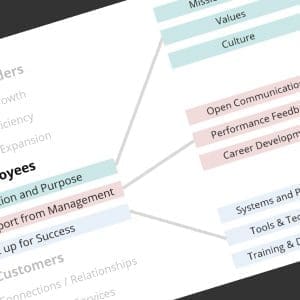An excellent discussion this afternoon, on a fairly complex topic we’re trying to move forward. When dealing with broad system concepts that have been trivialized into TLAs – think CRM, PLM, BPM, TQM, yada – you need to help folks define some sort of framework to focus and steer the initiative in a general (hopefully correct) direction. Precision is not required in the early stages – like herding cats, we can start making progress when we can capture a generalized, high level, but definite statement of the “end game”.
What does success look like?
How do we know we are done?
A typical early conversation about the Big Idea needs to define the Ultimate Objective. Expect to hear two mindsets weigh in; Tradition will muse on the challenge of changing The Way Things Are, while Innovation points out small, directionally promising successes that have led to this Big Idea. Be careful; there is always a sense that We could blow Big Bucks & Time on unfocused projects (not a good outcome), so a nice starting point is to laser in on our Ultimate Objective.
Look for patterns in the discussion; this afternoon, I saw a focus on
- Driving (a change) vs. Monitoring (the as-is) [think Active vs. Passive]
- Focus on Strategy (why) vs Tactics (how)
So, one way to attack this would be to build a mini-matrix, plus sample statements … for example, how might we prioritize IT requests?
- (Drive Strategy) Enable forward-looking discussions about options (where to invest, dedicate resources, etc.)
- (Drive Tactics) Facilitate “nimble” resource allocation decisions
- (Monitor Strategy) Quantify project cost / benefit / risk
- (Monitor Tactics) Drive productivity, ability to measure focus and results
You’ll need to refine and rework the statements based on some conversation, to fit the Big Idea. And these are admittedly high-level, vague statements – but they give enough focus to at least know where conversations should / should not go.
NB: This line of directed thinking is very much in line with classic scenario planning – I’ve gone through this exercise before on a grander scale, it generates some interesting insights.





Comments (0)